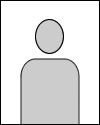| Abstract: |
<p>Purpose: To compare the dosimetry and treatment efficiency of lung stereotactic body radiation therapy (SBRT) using the deep inspiration breath hold (DIBH), free breathing (FB), and respiratory gating (RG) strategies. Methods and Materials: 308 lung SBRT patients with middle to lower zone lung tumors were included in this retrospective study. The prescriptions were 1000 cGy x 5 fractions, 1200 cGy x 4 fractions, or 1800 cGy x 3 fractions. They were all treated with a volumetric modulated arc therapy (VMAT) technique and 6 MV flattening filter free (FFF) beam on C-arm linear accelerators, but using different motion management strategies (151 DIBH, 136 FB, 21 RG). The lung dose (mean lung dose (MLD), V5, V20) and treatment time (on table, imaging & verification, delivery) of these patients were retrospectively collected for statistical comparison. Results: The average doses (MLD, V5, V20) to the ipsilateral lung were 408.2 cGy, 20.1 %, 5.7 % for the DIBH cohort, 569.8 cGy, 27.6 %, 8.4 % for the FB cohort, and 519.6 cGy, 23.5 %, 7.5 % for the RG patients. Correspondingly, the average time (on table/imaging & verification/delivery) for the three patient cohorts was 22.3/ 16.0/6.3 min, 13.6/10.5/3.1 min, and 22.7/14.6/8.1 min, respectively. Conclusion: Quantitative comparison of lung dose and treatment efficiency for three commonly used motion management strategies in lung SBRT is reported. While the relative advantages and disadvantages of these strategies are well recognized, our findings further confirm these differences and provide clinicians with quantitative data to support informed decision-making in clinical practice.</p> |















